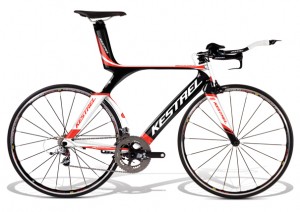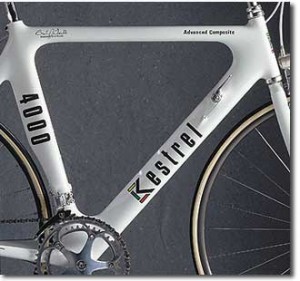
Browsing through design blogs this morning, I noticed that Yanko Design posted about the Kestrel 4000LTD time trial bike, designed by Anvil Studios. There is not a lot of substance about the bike in the YD post, but for more information on it you can check out this Cycling News article from May.
To be honest, I haven’t really paid much attention to Kestrel since the brand was acquired by Advanced Sports (parent company of Fuji) in 2007, but they do seem to be coming out with some very nice looking bikes these days. Though it has been quite a while, I still have an affinity for the brand from my days as a bike mechanic in the late eighties and early nineties. The shop that I worked for back then was a Kestrel dealer, so those were the first molded composite frames that I had experience with. We also carried bikes with carbon main tubes that fit into aluminum lugs, like the old Trek 2500 and the Giant Cadex, but compared to the monocoque Kestrel designs, those framesets seemed old fashioned. In the late eighties, Kestrel was a pioneer in carbon composite frame and fork construction, so the bikes really were unlike anything else on the road. I never owned one, but I built up and serviced quite a few Kestrel 4000’s for the local doctors and dentists who could afford them.

Though Kestrel is not the same company it was 20 years ago, I am glad to see that the brand is still focused on good design. The new bikes might not be as groundbreaking as those early monocoque composite frames were 20 years ago, but they do still have distinctive features and nice design details. Just looking at the pictures on their website and blog, Kestrel seems like a brand that I should get to know again.

Leave a Reply